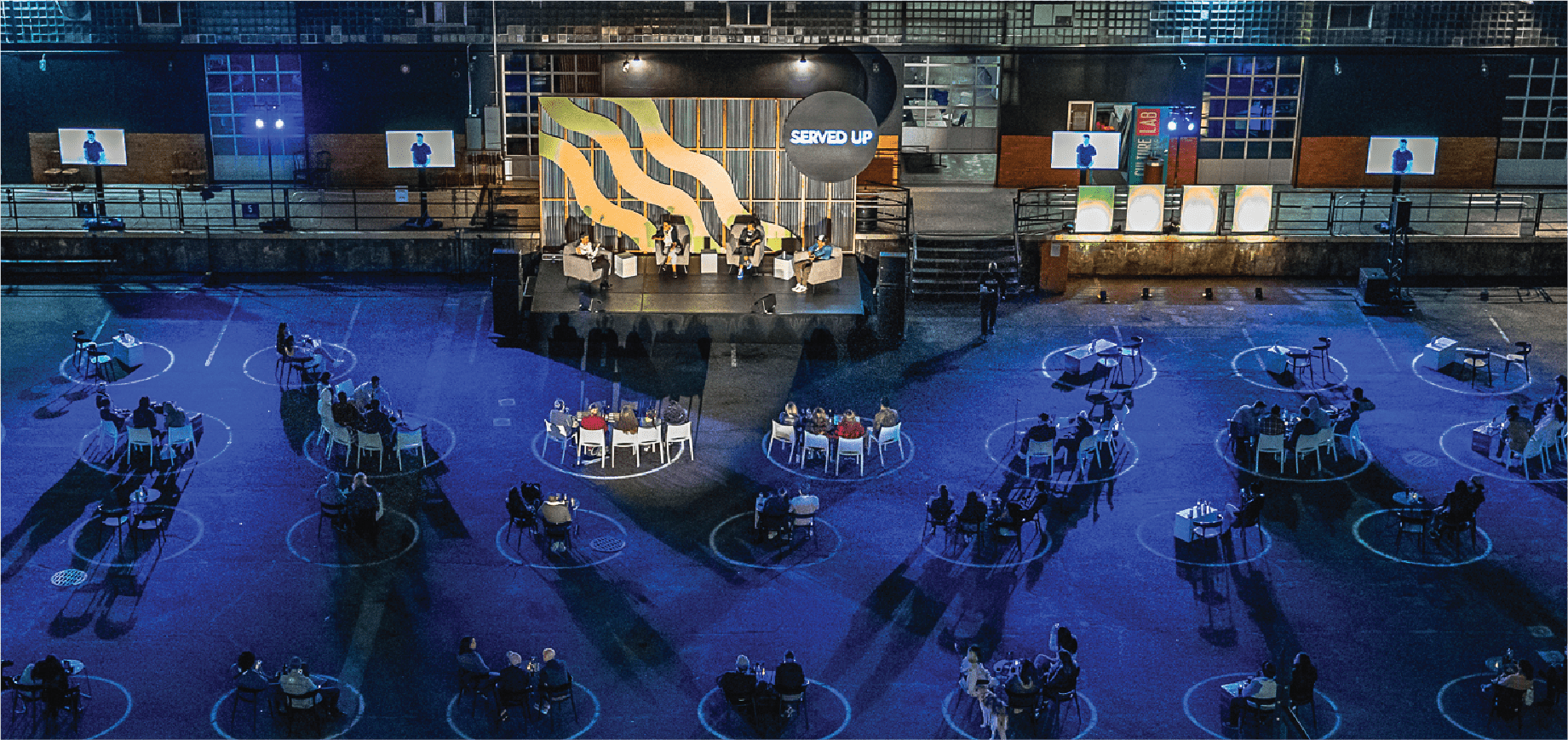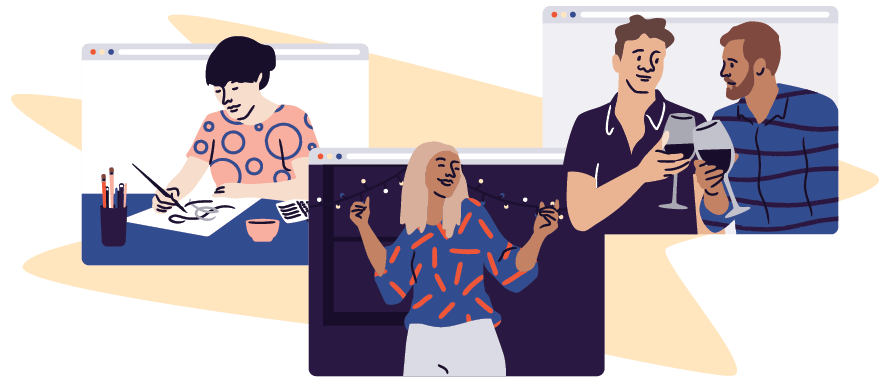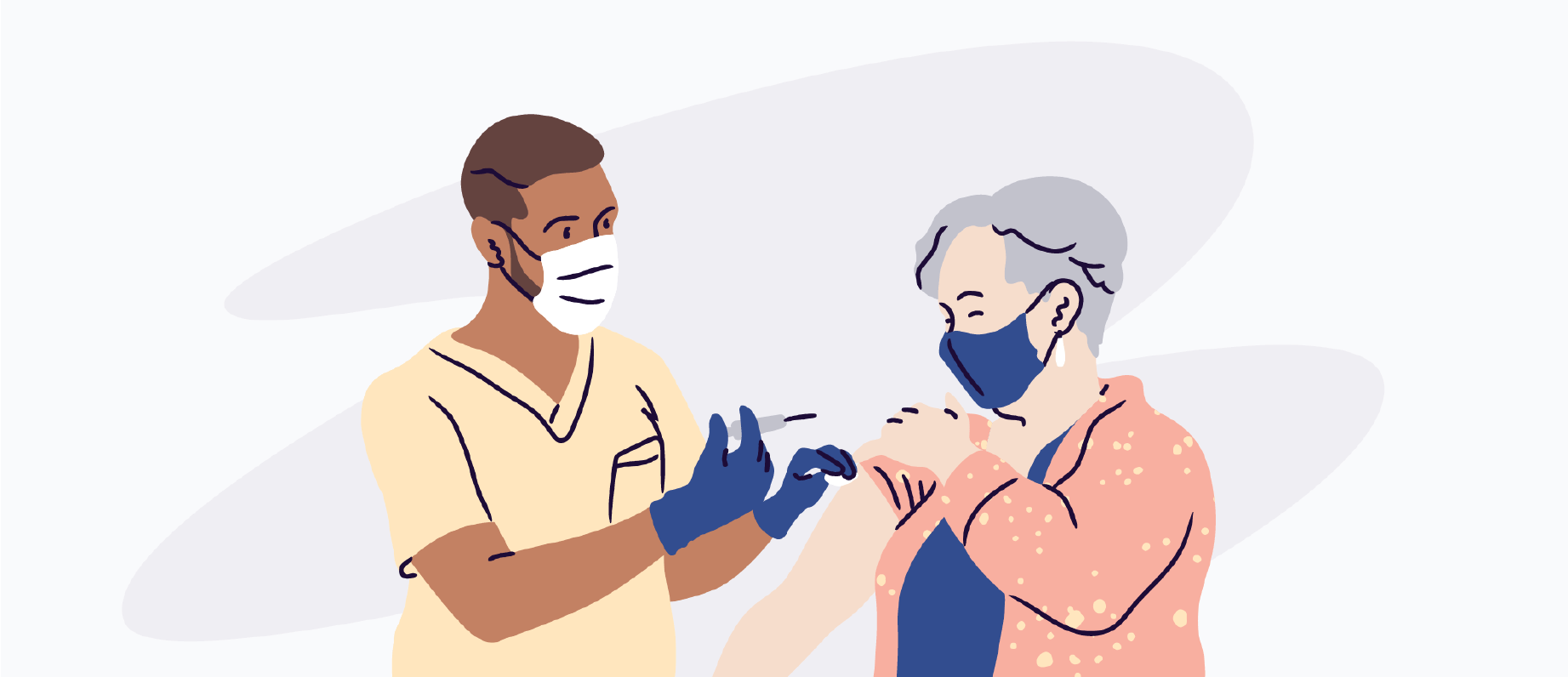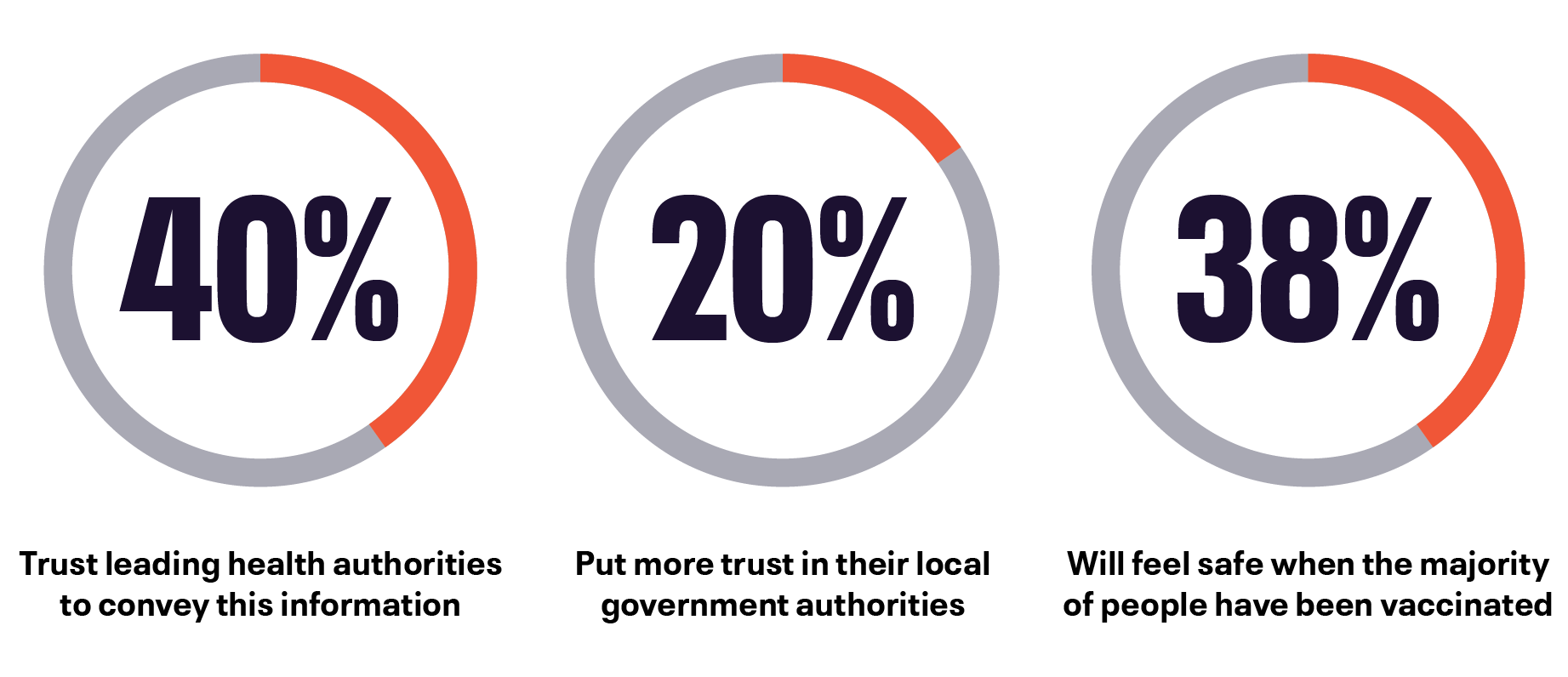People also listen to their families — and their own experiences. We’re always more comfortable when we’re familiar with the people and places around us, so make sure your attendees leave your events with a positive impression so they come back time and time again.
Use our Safety Playbook to find out how to create an event that follows the latest CDC safety guidelines. Then, get the latest developments in the return to live events with the Events Industry Report.

The types of events people want to attend
Though we’re still in the early stages of reopening, it’s already clear that food and community events, especially local ones, are the types of events people have missed most. In fact, a solid 62% of respondents said they were most excited to return to restaurants and dining events, and even more favored events that were held in their immediate vicinity. Well over a third look forward to reconnecting with loved ones — perhaps over a farm-to-table meal or wine tasting.
As you strategize your return to the live event space, pique people’s interest by promoting safe food and dining events and events that serve your community. Anthony Black of Eye Heart, an independent event producer in San Francisco, knows local regulations are key to fostering trust and comfort. “Staying up-to-date on all current guidelines is the most important thing,” he says.
It will take time to rebuild our communities, and our social lives, following the pandemic. Focus on building community and connection in a safe space, and your audience will respond.
The benefits of virtual events remain undeniable
Live virtual events were a lifeline during COVID-19. But even as live events return to our calendars, people don’t want to let go of the workshops, shows, and fitness classes they came to enjoy during the pandemic. The survey shows that well over half of event-goers had attended a virtual event before COVID-19, even more have attended a virtual event since COVID-19, and half are at least somewhat likely to attend a virtual event even after it is safe to attend in-person events. To put it another way, the success of virtual events doesn’t seem to rely too much on the pandemic.

That’s because virtual events have a whole host of benefits. John Braga, a cheesemonger for New York City-based fromagerie Murray’s Cheese, has found online cheese tastings sometimes actually work better than in-person events. When taking online cheese pairing courses, students feel emboldened to be more chatty. “Honestly, I think it gives people a bit more freedom to ask the things they are thinking,” he says.
So even as you begin to plan live events again, don’t pull the plug on your virtual audience.
Rethink your event marketing
Do you know how your attendees hear about your events? Our report reveals that close to two-thirds of people learn about events they want to attend from friends and family, and over half find out about events they want to attend over social media. With the deluge of exciting events hitting people’s calendars, it’s more important than ever to redouble your event promotion efforts and event marketing strategies.
Think about who people trust and how they spread the word. It’s clear people rely on their friends and family to tell them about interesting events and attend those events with them.
As you design your event and build your marketing campaign, keep people’s wallets in mind. The past year has been rough for a lot of folks, and our survey shows they’re being conscious about where they spend their money — a strong majority of respondents stated that cost is an important consideration for them. And, people are far more interested in spending money on food and dining than any other type of entertainment, with a full 72% anticipating spending money on dining at local restaurants. Cater to different budgets by offering multiple ticket types, using sliding-scale pricing, or pursuing sponsorships to keep ticket prices under control.
To supercharge your marketing efforts and reach new audiences, check out our newest feature, Eventbrite Boost, which lets you take care of all your marketing tasks in one place.



